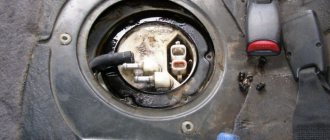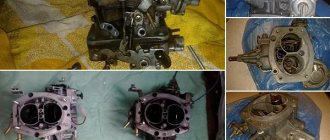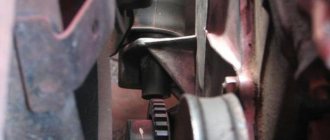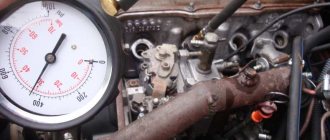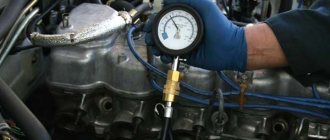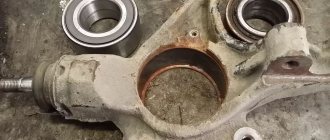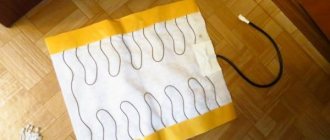In every car, the gas pump is considered one of the important devices that pumps fuel from the tank to the engine. The main thing is that it functions smoothly for good engine performance.
When checking the pump, it is necessary to determine the pressure. As a rule, the pressure of a submersible electric fuel pump is 2-4.5 bar (depending on the brand of the machine). Some engines reach 6 bar. Checking the pressure is not difficult, you just need to connect the pressure gauge to the car. The pump is also checked for productivity and the amount of current consumed.
How does a fuel pump work?
The main function of the gas pump is to transfer fuel from the tank to the engine. In injection engines, the fuel pump is connected to the fuel rail, and in carburetor engines - to the carburetor. Moreover, it is necessary not only to pump fuel, but also to provide a specific pressure.
Very high pressure usually leads to excessive enrichment of the mixture, as well as huge fuel consumption. And too low pressure leads to a decrease in the mixture, as well as a decrease in power. Both the 1st and 2nd cases negatively affect the life of the motor. That is, the fact that the pump pumps gasoline does not confirm its full serviceability.
Adjusting the pressure in the fuel system
A simple way to regulate the operation of a worn-out fuel pump is to install a fuel pressure regulator. It connects to the fuel rail and shows the pressure, allowing you to change it either up or down.
The device allows you to adjust the fuel pressure in the system depending on the situation
To measure the fuel pressure in the system, you can also use a pressure gauge by connecting it to the fuel rail.
Difficulties with fuel supply - common symptoms
Failures of the fuel supply system are conventionally divided into 2 groups:
- The combustible composition does not enter the cylinders at all.
- Fuel flows intermittently or under low pressure.
In the first case, the engine cannot start and does not engage the starter during rotation, i.e. it does not work. In such a situation, it is much easier to determine the cause of the malfunction.
If little gasoline enters the cylinders, the following symptoms occur:
- turning on the power device “when cold” is too difficult, the engine seizes, “sneezes”, and starts after 3–10 attempts;
- The idle speed is unstable, the engine “troubles”;
- active acceleration becomes unrealistic - sudden opening of the throttle causes a prolonged dip, as well as deceleration;
- if the driver releases the accelerator pedal, the engine usually quiets down;
- The car has difficulty climbing hills and also accelerates slowly when fully loaded.
The cause of the above phenomena may be a breakdown of the fuel pump or other system components. In addition, the main features are almost the same. To perform a clear diagnosis, you need to know how the power supply structure of the machine works.
The principle of operation of the mechanism
Product diagram for injection engines:
Mechanical products are used in cars with a carburetor fuel system, where fuel is supplied under low pressure, and electric fuel pumps in vehicles with fuel injection equipment, where gasoline is supplied under high pressure.
1. Fuel pump on vehicles equipped with a carburetor as a dispenser. The drive lever (pusher) is in constant friction, but the diaphragm shifts to the lower plane only when it is necessary to fill the product chamber with fuel. The return spring moves the diaphragm to the upper position, thereby supplying fuel to the dispenser. Composition of a mechanical fuel pump:
- Fuel filling chamber;
- Inlet and outlet type valves;
- Diaphragm seal;
- Return spring;
- Pusher (drive type lever);
- Cam;
- Camshaft.
2. Electric fuel pump on injection cars. Such a device is similar in operating principle to a mechanical prototype: the core is pulled into an electromagnetic valve until the contact group opens, blocking the flow of electric current. Composition of this product:
- Fuel filling chamber;
- Inlet and outlet type valves;
- Diaphragm seal;
- Return spring;
- Electromagnetic valve;
- Fuel pump mesh;
- Core;
- Contact Group.
For beginners, we inform you where the VAZ 2110 fuel pump is located: it should be looked for under the rear seat cushion of the car.
The gasoline pump does not pump: reasons
If the gasoline pressure becomes lower than possible and the pump stops functioning, then it is necessary to understand why the pump does not pump fuel. If there is no hum in the fuel pump, i.e. it does not turn on when the ignition is turned on:
- You need to check the 12 Volt power supply, as well as the ground on the pump chip. If the relay does not work, then you need to install an electronic control unit “brains”. If there is no voltage, then the cause should be found and eliminated in the electrical circuit of the machine.
- Then, if there is voltage and ground, you need to check whether the wires in the fuel pump are damaged. To do this you need to remove it from the tank. On VAZ modules, the chip in the pump housing often burns out. Then you will need to replace the chip and the upper connector on the module body.
- If everything is fine here, but the motor does not work, then connect 12 volts from the battery to the module and also check the hum of the pump. If the pump does not function, this means that it is broken and the pump motor needs to be replaced.
And if the fuel pump is functioning, but does not pump fuel, then you need to check:
- Fuel pressure in the rail.
- Clogging of pipelines, fine and coarse filters.
- Fuel pressure stabilizer for functionality. It is located on the ramp or in the fuel pump module (in the tank).
- A frequent cause of breakdown is water in the tank, which turns into ice in winter, so the pump functions, but does not provide the necessary pressure.
Pump filter and manual pumping lever
The first thing you will see when you disassemble the fuel supply device is the strainer. It is made of thin perforated plastic. The reason why the fuel pump does not pump can also be if it is deformed or severely contaminated.
In the first case, the filter must be replaced, in the second, it must be washed with carburetor cleaning fluid.
The manual pumping lever has nothing to do with the fact that the fuel pump does not pump fuel when the camshaft rotates. The only thing that can break in it is the spring that tilts it back to its original position.
Checking the serviceability of the pump on the injector
If you hear a slight noise when turning the ignition key, then this is how the fuel pump functions. By pushing up the fuel, it creates pressure in the structure. If, when trying to start, there are no similar symptoms of the fuel pump, then we can assume a breakdown of the electrics, the fuel pump or its separate elements.
Removing the pumping unit
Before starting work, you must disconnect the terminal from the battery. This will prevent damage to electrical equipment. In addition, replacing the fuel pump may cause a fire.
Let's prepare tools and materials. To remove the VAZ-2110 fuel pump, you need the following:
- Screwdriver.
- 10mm socket wrench.
- Collar.
- Open-end wrench 13.
- Rags.
The device itself is located under the rear seat cushion. To get to the installation location of the fuel pump 2110, you need to remove the seat. Under the casing we find a hatch. We unscrew the hatch. Disconnect the electrical drive connector.
Using an open-end wrench, unscrew the tips of the fuel pipes. We pull off the pipes. Using a spanner, unscrew the 8 nuts around the perimeter of the clamping ring. Release the flange.
There is a gasket under the pressure ring of the fuel pump 2110. The gasket is removed. It is better to change worn tires.
Then we raise the VAZ fuel pump together with the float. Gasoline will leak from the body. To avoid staining the interior, place a rag. There will be up to 1 liter of gasoline left in the old building. Drain it into the tank.
Assembly is carried out in reverse order. There is an arrow on the top of the cover. It should point towards the trunk. This is the correct pump position.
When replacing, do not forget to remove the float and level sensor.
These spare parts are installed on the new structure.
All operations, including preparation, will take less than an hour. After replacement, perform a test. Start the engine. Finally, you should check the fuel pump, make sure the connections are tight and there are no leaks.
How to check a fuel pump: techniques, methods, breakdowns
Modern cars are equipped with an electronic engine control system. Gasoline is injected into the combustion chamber using nozzles. An electric pump is provided to supply fuel. Fuel from the tank at a specific pressure of approximately 3-4 atm enters the nozzles and is distributed over the valve plate or directly onto the piston.
Most often, a submersible centrifugal pump is used. As a module, it is placed directly into the tank. There are also mounted fuel pumps, but they are not very popular.
Car owners may encounter a situation where the car does not start, pulls weakly, or drives irregularly. The reason for this, for example, could be a pump failure. It stops providing the necessary pressure to the fuel structure, and the nozzle sprays gasoline poorly, and the composition in the combustion chamber will not ignite.
The fuel pump needs to measure the pressure in the rail or near the pump. Usually the ramp has a separate fitting for a pressure gauge. In addition, it is possible to measure the pressure with your own hands using a pressure gauge at home, if one is available.
Difficulties in this procedure do not appear if there is a pipe in the ramp. And if it is missing, then you need to find the connection area in the fuel pipeline, and also install the device in the gap in the fuel supply hose, for which you will need a tee.
It is pointless to check the pressure by pressing the nipple in the ramp, because due to fuel vapors, as well as heating, you may mistakenly think that there is pressure. If there are no sounds from the pump, then you need to check the power using a multimeter or test lamp. Measuring rail pressure is included in the cost of checking the engine. It would be wiser to check the entire fuel structure and also eliminate the violations on site.
Diagnostic device
To determine the pressure in the main line, a device is needed. It's easy to do it yourself. You need to take a 10 atmosphere pressure gauge, a fitting and an oxygen hose with an internal diameter of 9 mm. We twist all the elements and tighten them with clamps.
The meter is connected to the ramp. To do this, remove the plastic cap from the end of the tube. Next, use a tire cap to unscrew the nipple.
Bleed off excess gasoline. Before draining the flammable liquid, place a rag to prevent gasoline from getting on the generator. Smoking and using electrified tools near the hood is strictly prohibited.
The free end of the hose is pulled onto the ramp. Secure the clamp. After connecting the battery, turn on the ignition. They take readings. The pressure of the VAZ-2110 fuel pump injector will deflect the pressure gauge needle to 3 atm.
After starting the engine, observe the movement of the needle. On working equipment, the pressure will be maintained within 2.8-3.2 units. If no deviations are found, then the VAZ-2110 fuel pump, injector and regulator are working correctly. It is advisable to remember the characteristics of the equipment.
The pump capacity is about 2 liters per second. If problems arise with the fuel supply, the pump must be replaced. Before checking the pump, make sure that the remaining elements are in good working order. The filter or mesh may be clogged. The fuel filter is changed and the mesh is cleaned.
Preventing fuel pump malfunctions
The best prevention for long service life of the fuel pump is its careful and correct use and, in addition, following the following rules:
- Absolutely all scheduled vehicle repairs must be accompanied by the replacement of all fuel filters.
- You should check the fuel tank, that is, make sure the tank and filters are clean; and check the quality of the gasoline being filled (the absence of water, sand and other impurities in it).
- Eliminate the possibility of water entering the fuel tank.
- Protect the pump housing from mechanical stress, which may cause dents and cracks to appear on the machine, which contribute to the formation of corrosion processes.
The fuel pump, like every other device, gradually wears out and stops functioning. If you suspect that the pump is faulty, you must immediately diagnose it.
